00:31
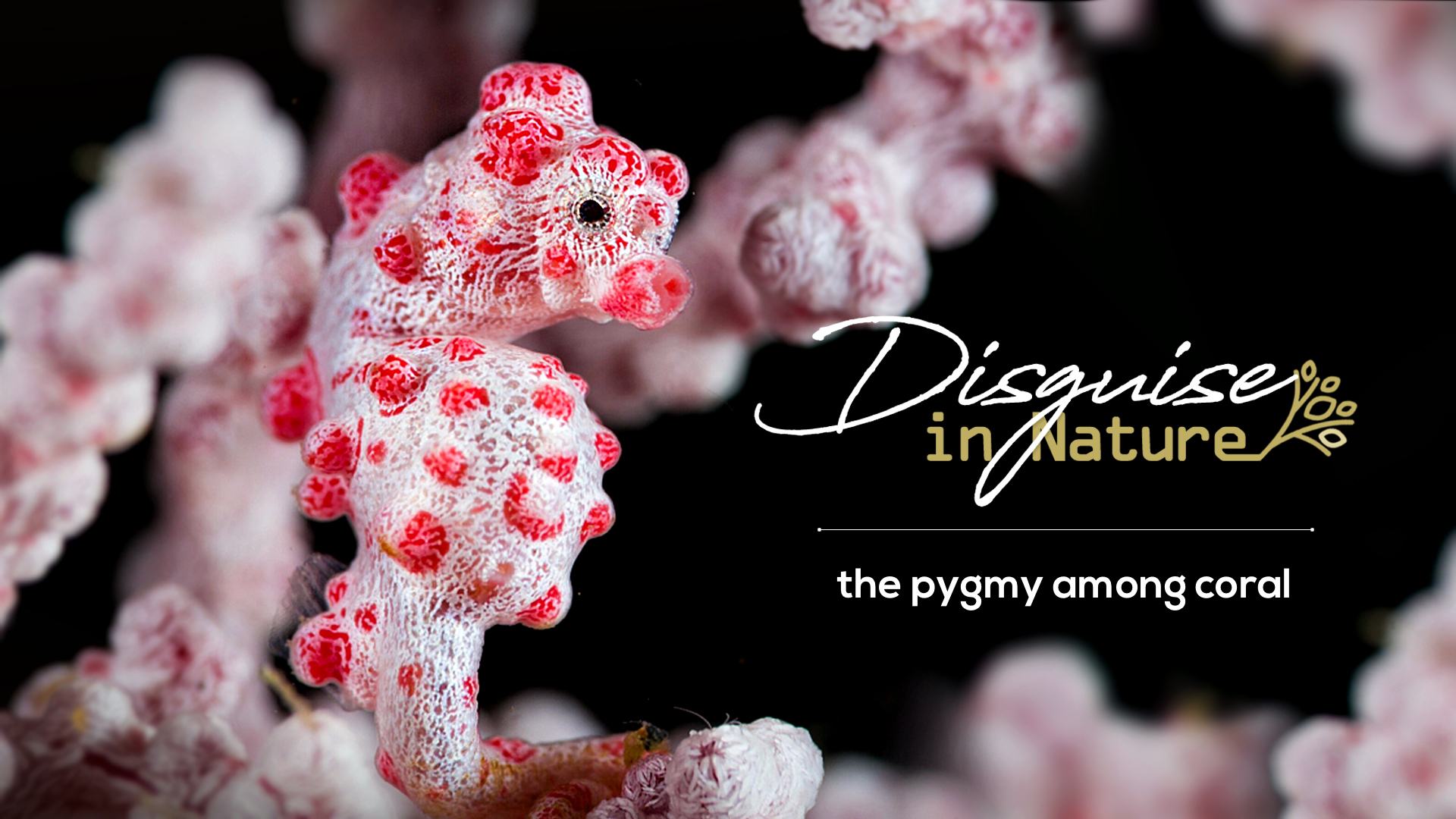
Found frequently in Southeast Asia, the pygmy seahorse is a new celebrity among divers. The smallest seahorse species is famous for its distinct size and skillful ability to camouflage itself among corals.
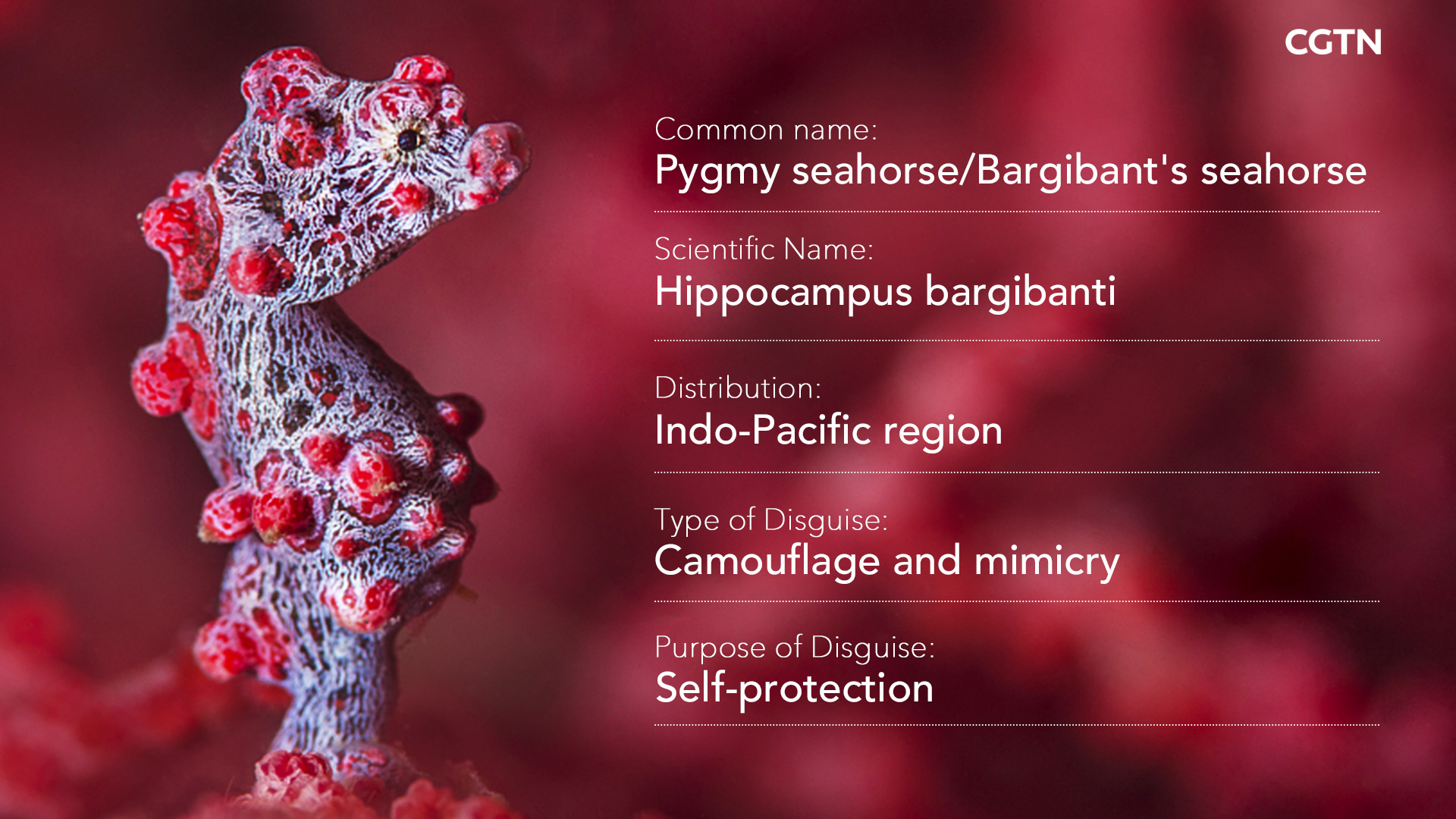
General information on the pygmy seahorse. /CGTN Graphic
General information on the pygmy seahorse. /CGTN Graphic
Pygmy seahorses can be found throughout the Indo-Pacific area, among seagrass and coral. It got the name "pygmy" because of its tiny size, which is usually less than two centimeters. Its miniature stature enables it to hide perfectly in coral, where it spends most of its lifetime resting and hunting.
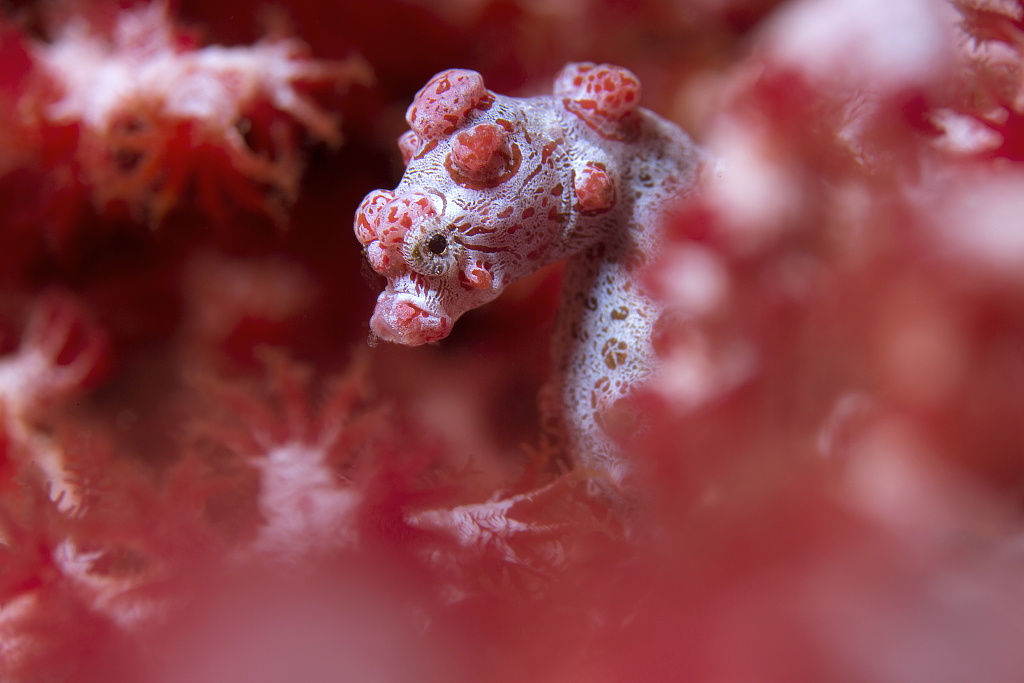
A close-up of a pygmy seahorse. /VCG Photo
A close-up of a pygmy seahorse. /VCG Photo
One interesting fact about the pygmy seahorse is its effective disguise. The animal evolved with bulbous tubercles covering its body, which perfectly match the color and shape of the gorgonian coral it calls home. It is still unknown if the pygmy seahorse can change color if the color of its host were to change, but other seahorse species have that ability.
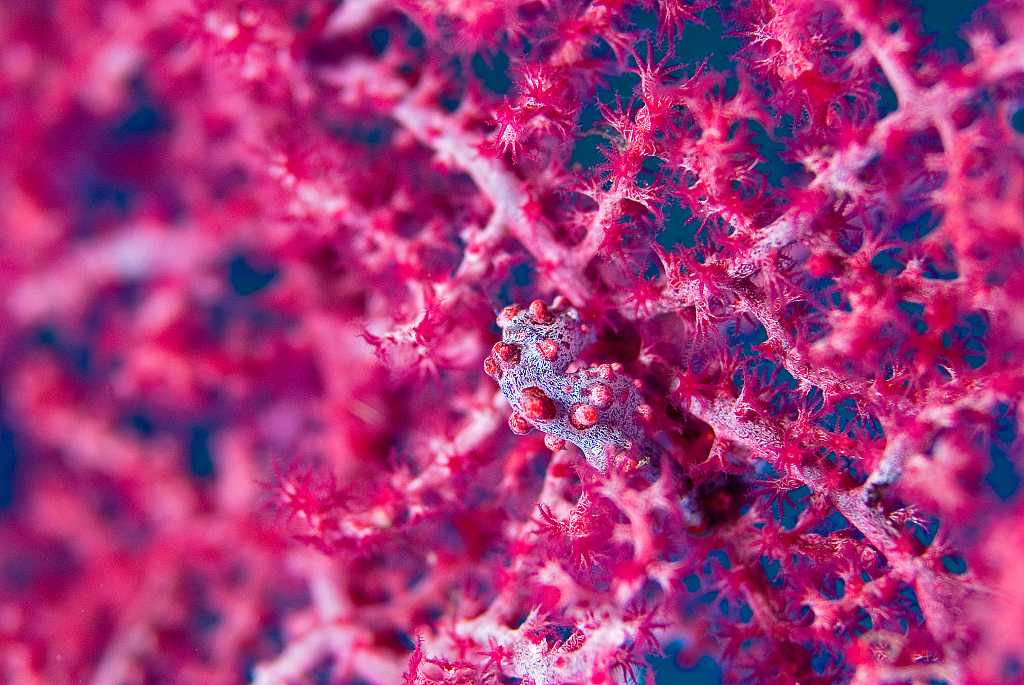
The coloring and texture of the pygmy seahorse match the color and shape of the gorgonian coral perfectly. /VCG Photo
The coloring and texture of the pygmy seahorse match the color and shape of the gorgonian coral perfectly. /VCG Photo
Because of its brilliant disguise, the pygmy seahorse was not discovered until a scientist named Georges Bargibant, who studied gorgonian corals, came across a pair of pygmy seahorses living in the coral specimen in his laboratory. Hence, the pygmy seahorse is also commonly known as "Bargibant's seahorse." It's scientific name Hippocampus bargibanti also pays homage to the scientist.
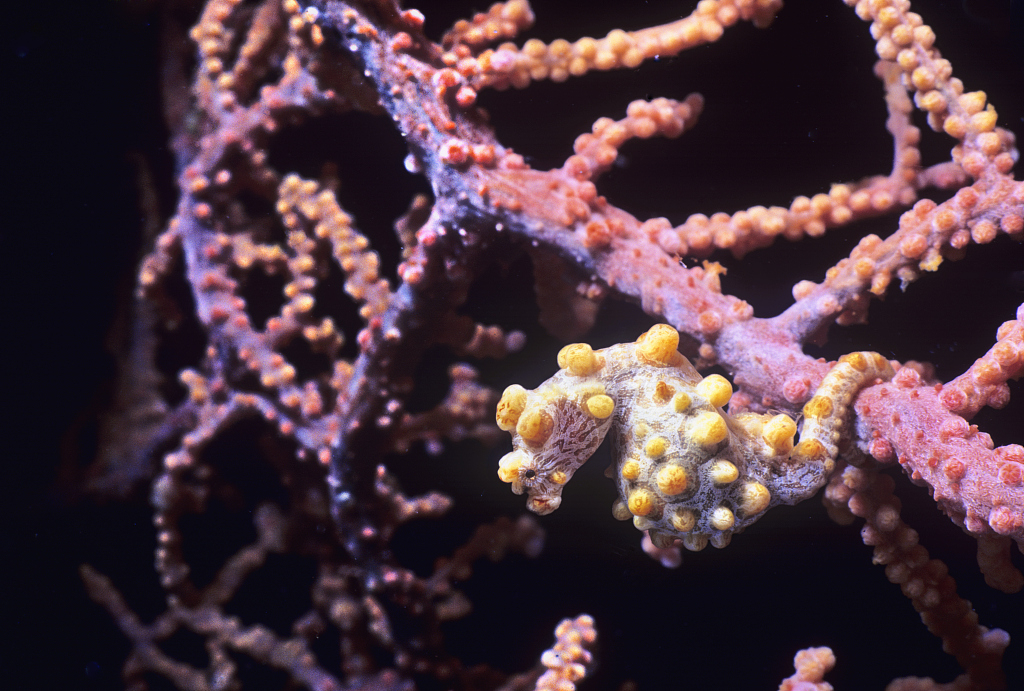
A pygmy seahorse rests on a coral. /VCG Photo
A pygmy seahorse rests on a coral. /VCG Photo
Though this adorable creature has become somewhat of a find for divers who travel to countries like Indonesia and Australia just to get a look at it, little is known about it.
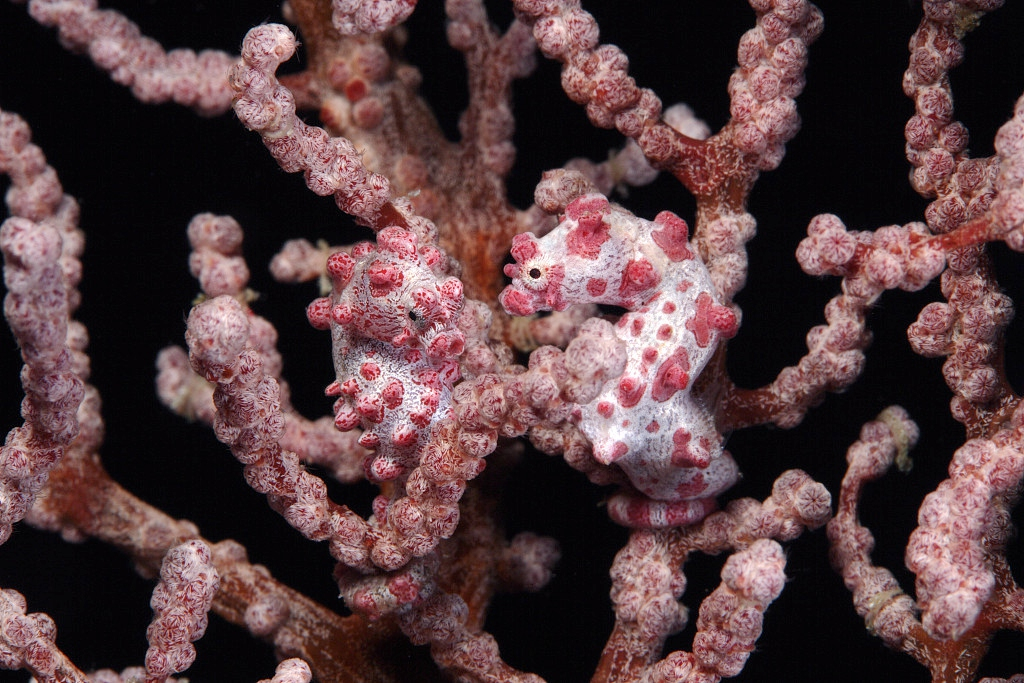
A pair of pygmy seahorses. /VCG Photo
A pair of pygmy seahorses. /VCG Photo
Due to the effectiveness of its disguise, the population, distribution and major threats to the tiny creature remain unknown as it is difficult for scientists to carry out research and data collection on the pygmy seahorse species. Hence, the International Union for Conservation of Nature (IUCN) lists this creature as "Data Deficient."
About the 'Disguise in Nature' series:
Camouflage and mimicry are two ways for creatures to disguise themselves. Disguises can either help them escape danger or make them perfect predators when hunting for food.
In this series, CGTN looks at several species that are masters of disguise. For each story, there will be a game of hide-and-seek with the introduced species.
Read more from the 'Disguise in Nature' series:
(Video via VCG, edited by CGTN's Xu Chenlu)
(Cover via VCG, designed by CGTN's Gao Hongmei)
(Information image via VCG, designed by CGTN's Du Chenxin)
(If you want to contribute and have specific expertise, please contact us at nature@cgtn.com.)
Find the animal
A pygmy seahorse is hidden in one of these pictures. Can you spot it?
Which picture hides the seahorse?
1 / 1
Next
Your Score
0
/
1
Let your friends and the world know
Start it again